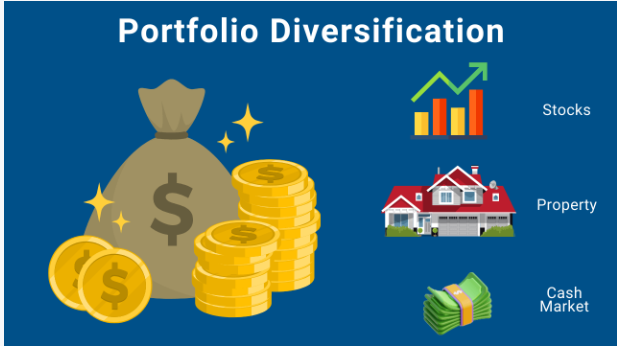How to Build a Diversified Investment Portfolio
One of the golden rules of investing is simple:
Don’t put all your eggs in one basket.
That’s the essence of diversification a strategy that helps reduce risk and improve long-term returns by spreading your investments across different assets, industries, and regions.
In this post, we’ll show you how to build a diversified investment portfolio, even if you’re starting small or investing for the first time.
What Is a Diversified Portfolio?
A diversified investment portfolio is one that includes a mix of assets that behave differently under various market conditions. The goal is to ensure that when one investment performs poorly, others may perform better—reducing the overall risk to your portfolio.
Why Diversification Matters
✅ Reduces Risk
If one part of your portfolio takes a hit, the rest can cushion the blow.
✅ Increases Stability
Diversification smooths out the ups and downs, making your portfolio less volatile.
✅ Enhances Returns Over Time
You don’t have to pick the “best” investment. Instead, your diversified mix can provide more consistent returns.
Step-by-Step Guide to Diversifying Your Portfolio
1. Know Your Financial Goals and Time Horizon
Before you invest, ask:
-
What am I investing for? (e.g., retirement, home purchase, education)
-
When do I need the money?
-
How much risk am I comfortable with?
Your goals will determine how aggressive or conservative your portfolio should be.
2. Understand the Main Asset Classes
Diversifying starts by investing in different asset classes:
| Asset Class | Description | Risk Level | Example |
|---|---|---|---|
| Stocks | Ownership in companies | High | Apple, Tesla |
| Bonds | Loans to companies/government | Low–Medium | U.S. Treasury Bonds |
| Real Estate | Physical or digital property | Medium | Rental property, REITs |
| Cash & Equivalents | Highly liquid and low-risk | Low | Savings, money market funds |
| Commodities | Physical goods like gold/oil | Medium–High | Gold ETFs, oil futures |
| Crypto | Digital assets | High | Bitcoin, Ethereum |
3. Choose Your Asset Allocation
Asset allocation is how you divide your money across different asset classes based on your goals, age, and risk tolerance.
Sample Allocations:
-
Aggressive (Long-term, high risk tolerance):
-
80% Stocks
-
15% Bonds
-
5% Cash
-
-
Moderate (Balanced approach):
-
60% Stocks
-
30% Bonds
-
10% Cash
-
-
Conservative (Short-term, low risk tolerance):
-
40% Stocks
-
50% Bonds
-
10% Cash
-
Tip: The younger you are, the more risk you can typically afford to take.
4. Diversify Within Each Asset Class
Don’t just invest in one stock or one type of bond. Spread your investments across sectors and geographies.
-
Stocks: Mix large-cap, mid-cap, and small-cap companies across different industries (e.g., tech, healthcare, energy).
-
Bonds: Include government, corporate, and municipal bonds.
-
Geographic Diversification: Invest in both domestic and international markets.
5. Use Mutual Funds or ETFs to Simplify Diversification
If building your own portfolio sounds overwhelming, consider using:
-
Index funds or ETFs that track a broad market index (e.g., S&P 500)
-
Target-date funds that automatically adjust asset allocation over time
These are low-cost, beginner-friendly ways to diversify instantly.
6. Rebalance Your Portfolio Regularly
Over time, some assets will grow faster than others. Rebalancing means adjusting your investments to return to your target allocation.
Example:
-
If stocks perform very well, they may now make up 85% of your portfolio when your target is 70%.
-
Rebalancing brings your portfolio back in line, helping manage risk.
Do this annually or semi-annually.
7. Keep Costs Low
High fees can eat into your returns. Look for:
-
Low-cost index funds
-
ETFs with low expense ratios
-
Brokerages with no trading commissions
Common Mistakes to Avoid
🚫 Putting everything in one stock or crypto
🚫 Ignoring international diversification
🚫 Forgetting to rebalance
🚫 Investing without understanding the risks
🚫 Letting fear or hype drive decisions
Final Thoughts on How to Build a Diversified Investment Portfolio
Building a diversified investment portfolio is one of the smartest ways to grow your wealth while protecting it from unnecessary risk. The best part? You don’t need to be a financial expert to do it. Start with your goals, spread your money wisely, and stay consistent over time.


